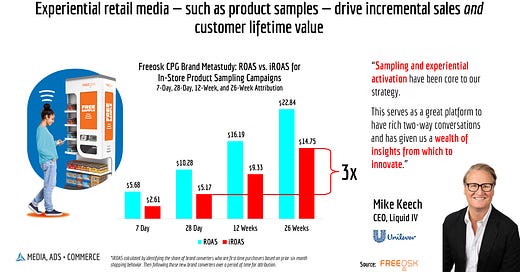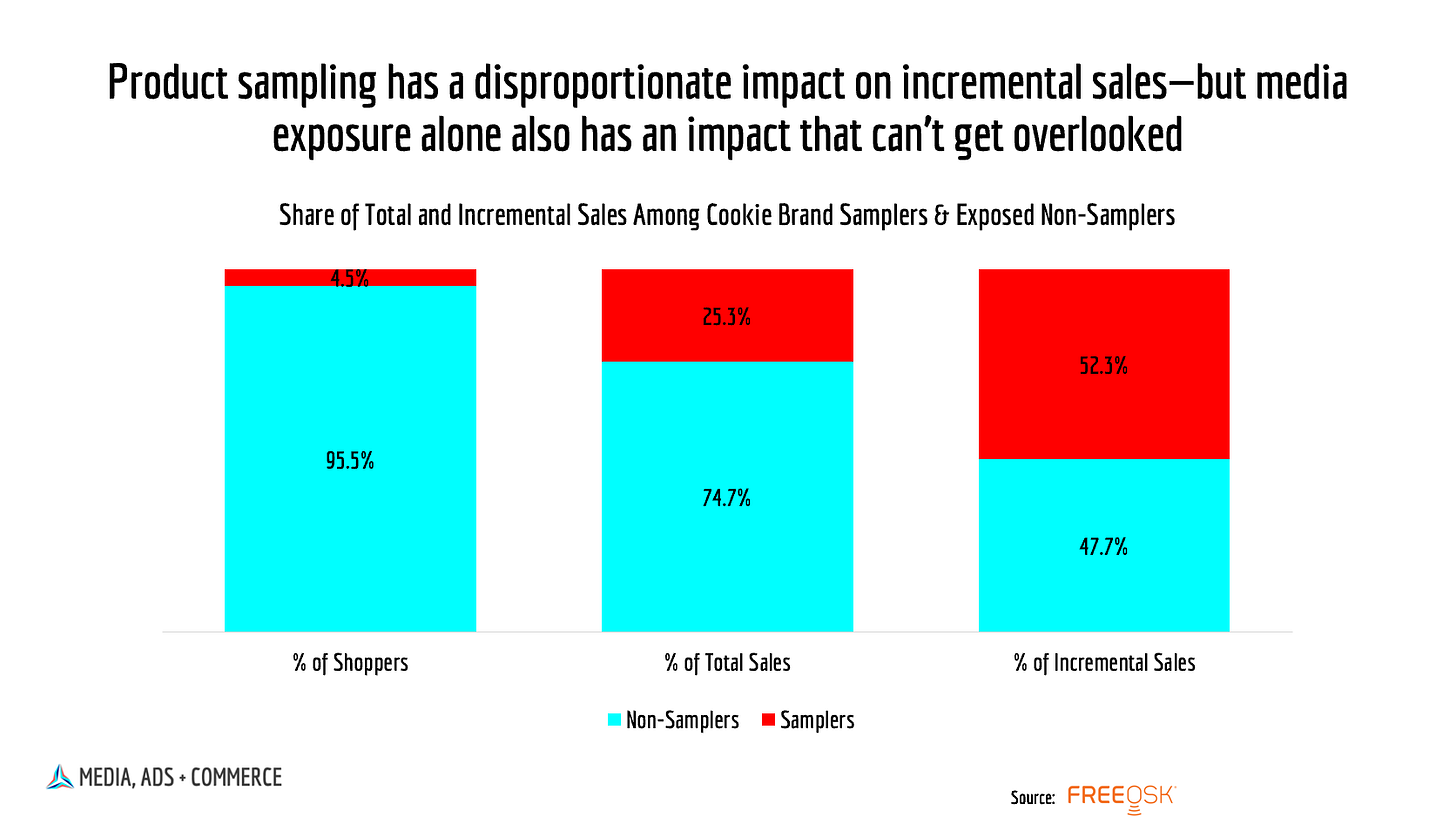The Rise of Experiential Retail Media
Building Brands with Multisensory, Multimedia, and Multichannel Experiences
This article was co-written by Matt Eichorn, co-founder & CEO of Freeosk, and originally appeared in WARC on May 18, 2025.
What is product sampling if not a form of media? It carries branding, creates awareness, establishes affinity, and drives purchase—often on a recurring basis.
Coupled with digital media in a physical environment, it becomes experiential retail media, a high-impact activation that collapses the marketing funnel and uniquely influences consumer behavior.
We define experiential retail media by the following characteristics:
Multisensory – it offers media content that engages three or more senses simultaneously for immersive and engaging discovery.
Multimedia – it brings interconnected media formats together for a dynamic experience.
Multichannel – it provides interactivity across both physical and digital channels.
For more on this topic, download our latest report: “Experiential Retail Media: The Next Frontier.”
Retailers are now waking up to this opportunity and its power to both elevate the in-store customer experience (CX) and deliver campaign effectiveness for brands.
Experiential retail media is the cornerstone of Retail Media 3.0, the realization of this emerging ad market’s full potential as it evolves across media formats and sales channels. This is where media combines the effectiveness of branding, performance, and product experience, and attribution accounts for not only digital and in-store sales but sales effectiveness over time.
Experiential retail media is not just an evolution but a revolution in how brands engage with consumers.
“Sampling and experiential activation have been core to our strategy,” said Mike Keech, CEO of Liquid IV, a Unilever brand. “This serves as a great platform to have rich two-way conversations and has given us a wealth of insights from which to innovate.”
Product Samples Drive Sales Lift & Customer Lifetime Value
Physical retail has always been the ultimate discovery platform, and humans are hardwired to enjoy novel experiences—especially in the context of routine behaviors like weekly shopping trips. That’s why product sampling is unrivaled by any other media in forging an emotional connection between the consumer and the brand. This drives measurable near-term gains in incremental sales, but more importantly higher customer lifetime value.
A recent meta-study of 5 product sampling campaigns using 26-week attribution windows found that incremental sales build significantly over time. The average campaign iROAS was $5.17 after 28 days, an above-average result compared to most media. But over the course of 26-weeks, iROAS nearly tripled to $14.75—an indication that some new-to-brand buyers became recurring buyers.
Longer attribution windows offer a clearer picture of incrementality that completely changes how a brand might invest in this channel.
Experiential Retail Media is Branding & Performance
While experiential retail media is an effective long-term sales driver, it’s much more than that. Activations combining media and merchandising produce branding effects that can also be measured.
Consider the example of product sampling campaign for a cookie brand, where 4.5% of all store shoppers sampled the product during the campaign period. This modest sub-set of consumers contributed 25% of total brand sales and 52% of incremental sales during the period, highlighting product samples’ overall effectiveness at influencing behavior.
What can easily be overlooked is that the 95% of shoppers who didn’t sample the product but were potentially exposed to accompanying media drove 75% of total brand sales and 48% of incremental sales.
The value of upper-funnel media is the extent to which it can reach more eyeballs, and in this case the campaign’s addressable market was all in-store shoppers—a number more than 20x greater than the number of samplers.
The digital media’s effectiveness is subtler on a per-impression basis, but it makes up for it on volume, ultimately translating to nearly half the total impact on incremental sales.
This impact isn’t trivial, especially when considering that the physical store is still the primary channel for CPG brand discovery and where 85% of retail sales happens. Kantar estimates that up to 75% of branding impact comes from product experience.
CPG brands that want to use retail media to grow will put the emphasis back on experience.







